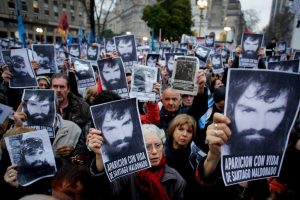Latin American History and Culture:
Rhys covered a topic involving the Miss Peru 2018 Beauty Pageant. The significance of this is instead of discussing body characteristics of the competitors, they spoke about Gender Based violence and they wanted to raise awareness about it since it isn’t as widely spoken about in Peru. Each of the competitors spoke about statistics involving Gender Based (specifically Female) discrimination. Peru has the second highest rate of Gender Based Violence in South America, first being Bolivia. In 2015 they attempted to pass legislation to perpetuate the criminals who acted in these crimes but it didn’t garnish enough support from the government.
Class Discussions:
Today we are discussing the treatment of natives based on Native opinion. As well as the relationship between Indios and Ladinos/Castas. The native people were mostly workers in the colonies and often times they were impoverished. The reason for this impoverishment is the lack of access of land since natives were not allowed to have it. Often times it would be given to Spanish Enconmedias to garnish wealth. Despite the impoverishment, there is still a hierarchy of sorts inside these native communities. The elites in these groups would be the ones to have access to land and have high value children (Daughters especially) and marry them off to Spanish people. This would be a way to form alliances between the Spanish and these communities. Gender Separation was wildly enforced by the Spanish as previously there wasn’t particularly roles for the two genders.
Tangit:
We talked about various types of marriage in Colonial Latin America and there was some weird Habsburg level cousin marriage going on. Recessive inherited traits show up.
Guaman Poma
- The book has a large amount of pictures that show the priest forcing marriage onto two Incan people.
- The priests are considered active members of the abuses going on in the Americas.
- Highly critical of the Spanish authority in the colonial society.
- They view the native people as Children.
Thomas Gage
- He travelled around Latin America and he has on the ground experience
- He was an English Priest (member of Dominican Order) converted to Puritanism and was critical on the Catholic Church.
- Strong Moral Objection (It’s not the way God would have wanted) against the Spanish.
Native Lords of Pintag
- Basically a complaint directly to the king from the native people to remove the tyrannical colonial authorities.
- [dan], it is a worthy title used by an “elite” of sorts.
- Land rights were violated, colonists abusing the labor system (more than half male population), no control over their own crops, their tribute gets eaten by animals.
- In the second letter to the king(1599), clearly things have not improved and the crisis is only getting worse. The natives decided to leave since it isn’t worth it anymore.
Important Terms for Today
- Republica de Indios- The Republic of the Indians, it was an autonomous form of government that allowed the natives (to a certain extent) to govern themselves.
- Ladimos- mix ethnic group of Mestizo and Hispanized people
- Gurani- a Native people that live in Southern Brazil and almost all of Paraguay.
- Felipe Guaman Poma de Ayala- A Quechan noble man who was a councillor and he wrote on the abuses the Spanish did to his people in the Andes.


